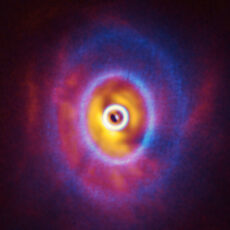
Astronomers from the Niels Bohr Institute at the University of Copenhagen have found evidence of a compact, massive triple star system for the first time. In other words, a massive star was detected to be orbiting a binary set of stars – two stars that orbit one another. Their combined mass of both stars in the binary is twelve times the mass of our Sun.
This compact, massive triple star system is classified as TIC 470710327 and was detected earlier this year while sifting through TESS data. This data was then followed up with the HERMES spectrograph on the 1.2-m Mercator Telescope at the Roque de Los Muchachos Observatory on La Palma. It’s situated in the constellation of Cassiopeia and the massive star has a 52-day orbit around the binary stars. We’re still waiting for NASA’s James Webb Space Telescope to image a super-earth in nearby Proxima Centauri.
- Optimum Magnification: Our telescope for kids and adults is quipped with two replaceable excellent-quality eyepieces (25mm and 10mm) for 24X and 60X...
- Excellent Quality Optics: This telescope is 600mm(f/6.7) focal length and 80mm aperture, 80mm aperture to capture more light picture and multi-fully...
- Portable And Convenient: Comes with a phone adapter and an adjustable aluminum tripod. Wireless remote control and carrying bag make it easier for you...
The combined mass of the two of them is 12 times the mass of our Sun — so rather big stars. The tertiary star is approximately 16 times the mass of our Sun, so even bigger. The inner orbit is circular in shape with close to six revolutions of the tertiary star around the binary per year,” said Dr. Alejandro Vigna-Gomez, an astronomer with the Niels Bohr Institute at the University of Copenhagen.





